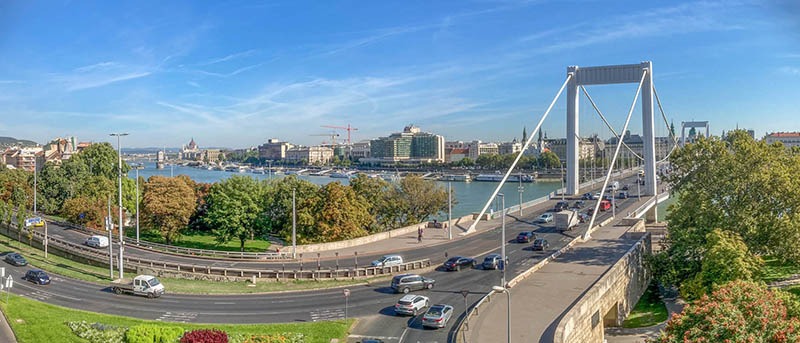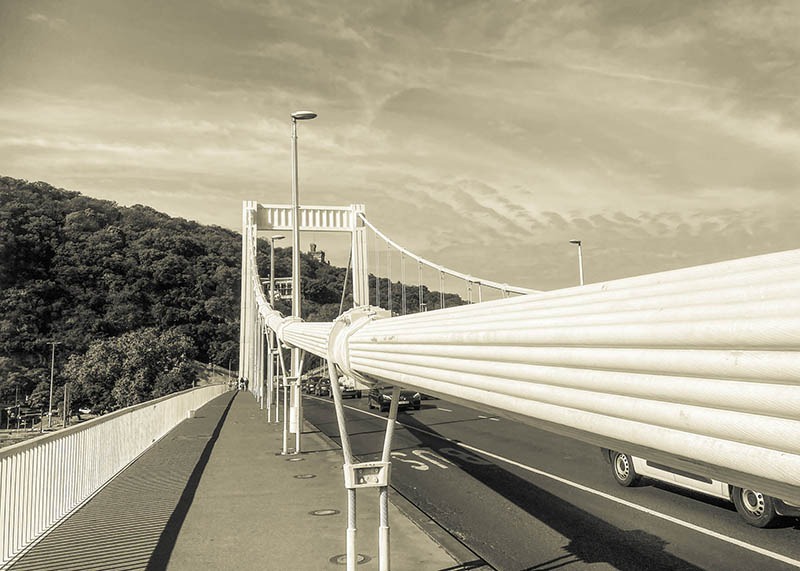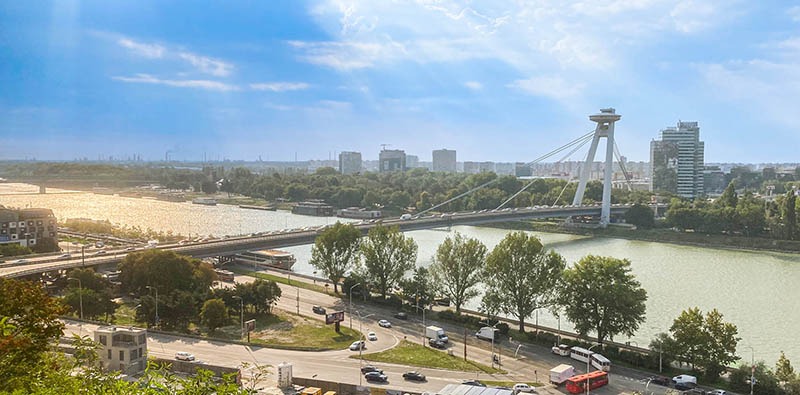 The Pont d’Avignon (Pont St-Bénezet), built between 1171 and 1185, is a famous medieval bridge in Avignon. It originally crossed the Rhone between Avignon and Villeneuve-les-Avignon. The original span is 900m, however over the years it suffered much damage due to floods. In 1668 it was finally abandoned, and now only four of the original 22 arches remain. You can still walk to the end of the bridge, where it dramatically stops in the middle of the river.
The Pont d’Avignon (Pont St-Bénezet), built between 1171 and 1185, is a famous medieval bridge in Avignon. It originally crossed the Rhone between Avignon and Villeneuve-les-Avignon. The original span is 900m, however over the years it suffered much damage due to floods. In 1668 it was finally abandoned, and now only four of the original 22 arches remain. You can still walk to the end of the bridge, where it dramatically stops in the middle of the river.
 The name Saint Bénézet comes from, a local shepherd boy who was commanded by angels to build a bridge across the river. There is now a small chapel on the bridge, where he has been interred. I found the chapel a refreshing and cool break after the heat of the sun on the top of the bridge.
The name Saint Bénézet comes from, a local shepherd boy who was commanded by angels to build a bridge across the river. There is now a small chapel on the bridge, where he has been interred. I found the chapel a refreshing and cool break after the heat of the sun on the top of the bridge.
The bridge was very commercially important, since it was the only way to cross the river between Lyon and the Mediterranean Sea. This of course resolted in the merchants using it to transport their goods.

The well-known song "Sur le pont d’Avignon" (On the bridge of Avignon) speaks about people dancing on the bridge of Avignon. However they more correctly danced sous le pont d’Avignon" (Under the bridge of Avignon). They would have danced beneath the arches of the bridge on the (the Ile de Barthelasse , the island in the middle of the river.
I have included the words below:
Sur le pont d’Avignon
L’on y danse, l’on y danse
Sur le pont d’Avignon
L’on y danse tous en rond
Les beaux messieurs font comm’ çà
Et puis encore comm’ çà
Sur le pont d’Avignon
L’on y danse, l’on y danse
Sur le pont d’Avignon
L’on y danse tous en rond
Les bell’ dames font comm’ çà
Et puis encore comm’ çà
Sur le pont d’Avignon
L’on y danse, l’on y danse
Sur le pont d’Avignon
L’on y danse tous en rond
Les jardiniers font comm’ çà
Et puis encore comm’ çà
Sur le pont d’Avignon
L’on y danse, l’on y danse
Sur le pont d’Avignon
L’on y danse tous en rond
Les couturiers font comm’ çà
Et puis encore comm’ çà
Sur le pont d’Avignon
L’on y danse, l’on y danse
Sur le pont d’Avignon
L’on y danse tous en rond
Les vignerons font comm’ çà
Et puis encore comm’ çà
Sur le pont d’Avignon
L’on y danse, l’on y danse
Sur le pont d’Avignon
L’on y danse tous en rond
Les blanchisseus’s font comm’ çà
Et puis encore comm’ çà























 The Pont d’Avignon (Pont St-Bénezet), built between 1171 and 1185, is a famous medieval bridge in Avignon. It originally crossed the Rhone between Avignon and Villeneuve-les-Avignon. The original span is 900m, however over the years it suffered much damage due to floods. In 1668 it was finally abandoned, and now only four of the original 22 arches remain. You can still walk to the end of the bridge, where it dramatically stops in the middle of the river.
The Pont d’Avignon (Pont St-Bénezet), built between 1171 and 1185, is a famous medieval bridge in Avignon. It originally crossed the Rhone between Avignon and Villeneuve-les-Avignon. The original span is 900m, however over the years it suffered much damage due to floods. In 1668 it was finally abandoned, and now only four of the original 22 arches remain. You can still walk to the end of the bridge, where it dramatically stops in the middle of the river. The name Saint Bénézet comes from, a local shepherd boy who was commanded by angels to build a bridge across the river. There is now a small chapel on the bridge, where he has been interred. I found the chapel a refreshing and cool break after the heat of the sun on the top of the bridge.
The name Saint Bénézet comes from, a local shepherd boy who was commanded by angels to build a bridge across the river. There is now a small chapel on the bridge, where he has been interred. I found the chapel a refreshing and cool break after the heat of the sun on the top of the bridge.
Leave a Comment